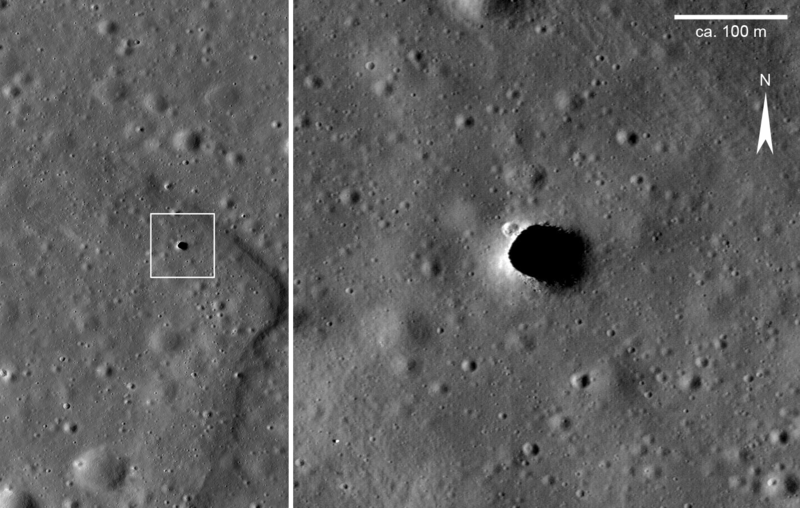Datei:Marius hills pit.png

Größe dieser Vorschau: 800 × 508 Pixel. Weitere Auflösungen: 320 × 203 Pixel | 640 × 406 Pixel | 1.024 × 650 Pixel | 1.430 × 908 Pixel.
Originaldatei (1.430 × 908 Pixel, Dateigröße: 746 KB, MIME-Typ: image/png)
Dateiversionen
Klicke auf einen Zeitpunkt, um diese Version zu laden.
| Version vom | Vorschaubild | Maße | Benutzer | Kommentar | |
|---|---|---|---|---|---|
| aktuell | 00:28, 2. Nov. 2018 |  | 1.430 × 908 (746 KB) | wikimediacommons>Gretarsson | {{Information |description ={{en|1=Photograph of a ‘hole’ in the Moon’s surface in the Marius Hills area, Oceanus Procellarum, taken by the Lunar Reconnaissance Orbiter probe (LROC). The right image renders a magnification of the area which is enclosed in the white box in the left image. In the left image the situation of the ‘hole’ within a shallow, sinous rille structure (rima) is well recognizable. Because rilles are thought to represent fossil lava streams, the ‘hole’ is interpreted as... |
Dateiverwendung
Die folgende Seite verwendet diese Datei:

